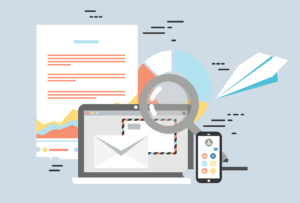
In today’s rapidly changing marketplace, Marketing information plays a vital role in shaping marketing strategies and driving business growth. Marketing managers need more and better information to make effective and timely decisions. In order to produce superior customer value and satisfaction, companies need at almost every turn.
Table of Contents
ToggleWithout proper marketing information management (MIM), businesses may struggle to understand their customers’ needs, preferences, and buying habits. This lack of insights can lead to ineffective marketing campaigns, wasted resources, and missed opportunities.
However, with the right approach, this data can become a goldmine of insights, driving marketing strategies and fueling business growth. In this article, we’ll explore what is MIM, importance in decision making, key benefits and components of MIM.
What is Marketing Information Management?
People, equipment, and procedures to gather, sort, analyze, evaluate and distribute needed , timely, and accurate information to marketing decision makers.
It’s about transforming raw data into actionable insights, enabling marketers to optimize their strategies and maximize their return on investment (ROI). Effective MIM ensures that marketing efforts are data-driven, targeted, and measurable.
The Importance of Marketing Information
Marketing information is the lifeblood of any successful marketing strategy. It provides a deep understanding of your target audience, their preferences, and their needs and wants. With marketing information, you can:
- Identify market trends and opportunities.
- Develop targeted campaigns that resonate with your audience.
- Measure the effectiveness of your marketing efforts.
- Refine your marketing mix to optimize ROI
Types of Marketing Information
Marketing information can be categorized into two primary types: primary and secondary data.
Primary data: Primary data refers to information that is collected directly from original sources. This data is specific to a particular research objective and is gathered through methods such as surveys, interviews, observations, and experiments.
Primary data provides firsthand insights into consumer behavior, preferences, and opinions.
Secondary data: Secondary data, on the other hand, is information that already exists and has been collected by someone else and readily is available. This data can come from various sources, including market research reports, government publications, and online sources.
Secondary data is valuable for benchmarking, trend analysis, and understanding the broader market context.
By utilizing both primary and secondary data, marketers can gain a comprehensive understanding of their target audience, industry trends, and competitive landscape.
Collecting Marketing Information
Collecting marketing information requires a systematic approach to ensure the accuracy and reliability of the data. Here are some common methods used in data collection:
Surveys
Surveys are a popular method for gathering information from a large number of respondents. They can be conducted through various channels, such as online surveys, phone interviews, or in-person questionnaires.
Surveys allow marketers to collect specific data, such as demographics, preferences, and feedback, directly from their target audience.
Interviews
Interviews provide an opportunity to gather in-depth insights from individuals or focus groups. This qualitative method allows marketers to explore consumer motivations, opinions, and experiences in greater detail.
Interviews can be conducted face-to-face, over the phone, or through video conferencing platforms.
Observations
Observational research involves observing and recording consumer behavior in real-time. This method is particularly useful for understanding consumer interactions with products, services, or marketing campaigns.
Observations can be conducted in physical locations, online environments, or through video recordings.
Key components of MIM
Marketing information management (MIM) is a complex process that involves various components working together to collect, analyze, and distribute data. Here are the key components:
- Data Collection: This is the first step in MIM. It involves gathering information from various sources, such as customer feedback, market research, and sales data. The data can be both quantitative (numbers, statistics) and qualitative (opinions, feedback).
- Data Storage: Once the data is collected, it needs to be stored in a systematic manner for easy access and retrieval. This is typically done using databases and Customer Relationship Management (CRM) systems.
- Data Analysis: This involves processing the collected data to extract meaningful information. Techniques such as data mining, predictive modeling, and statistical analysis are used.
- Information Distribution: The analyzed data is then converted into useful information and shared with the relevant departments within the organization. This helps in making informed business decisions.
- Decision Making: The ultimate goal of MIM is to aid in decision making. The information provided by the MIM system is used by managers and executives to formulate marketing strategies, improve customer service, and drive business growth.
- Measuring Feeback: This is an ongoing process where the results of the implemented decisions are monitored. The feedback received is then used to make necessary adjustments to the strategies.
Benefits of MIM
- Informed Decision-Making: MIM provides valuable information that help businesses make informed decisions. It eliminates guesswork and enables businesses to strategize based on data.
- Understanding Customer Needs: MIM helps businesses understand their customers better. It provides information about customer preferences, buying habits, and feedback, which can be used to improve products and services.
- Competitive Advantage: With MIM, businesses can keep an eye on market trends and competitor strategies. This information can be used to stay ahead of the competition.
- Improved Marketing Strategies: MIM helps businesses identify what works and what doesn’t in their marketing campaigns. This leads to more effective and efficient marketing strategies.
- Increased Sales and Profitability: By providing insights into customer behavior and market trends, MIM can help businesses increase their sales and profitability.
- Enhanced Customer Satisfaction: By understanding customer needs and preferences, businesses can provide better products and services, leading to increased customer satisfaction.
Challenges in Marketing Information Management
- Data Overload: In today’s digital age, businesses have access to vast amounts of data. Managing and making sense of this data can be overwhelming.
- Data Quality: Not all data is useful or accurate. Ensuring the quality and reliability of data is a significant challenge.
- Data Security: With the increasing incidence of cyber threats, ensuring the security and privacy of marketing data is a major concern.
- Integration of Data: Businesses often collect data from various sources. Integrating this data to provide a unified view can be complex.
- Cost: Implementing a robust MIM system can be expensive. Small businesses may find it difficult to afford.
Best Practices in Marketing Information Management
To master marketing information management, it is essential to follow best practices that ensure the effectiveness and efficiency of your efforts. Here are some key best practices to consider:
- Define Clear Objectives: Before collecting data, have clear objectives about what you want to achieve with the information. This will guide your data collection and analysis process.
- Ensure Data Quality: Always verify the accuracy and reliability of your data. Inaccurate data can lead to misguided decisions.
- Use Appropriate Tools: Utilize software and tools that can help you collect, analyze, and manage data effectively. There are numerous MIM tools available that can automate and streamline these processes.
- Prioritize Data Security: Implement robust security measures to protect your marketing data from cyber threats. This includes using secure storage solutions and regularly updating your security systems.
- Regularly Update Your Data: Market trends and customer preferences change rapidly. Regularly update your data to ensure it remains relevant.
- Train Your Staff: Ensure your staff is well-trained in data analysis and interpretation. This will enable them to make the most of the information available.
- Leverage Data Integration: Try to integrate data from various sources to get a comprehensive view of your market.
Tools and Technologies for MIM
MIM has been revolutionized by the advent of various tools and technologies. Here are some key ones:
- Customer Relationship Management (CRM) Systems: CRM systems like Salesforce, HubSpot, and Zoho CRM help businesses manage their interactions with current and potential customers. They provide a centralized platform to store all customer data, making it easier to track and analyze.
- Data Visualization Tools: Tools like Tableau and PowerBI help in visualizing data in an understandable format. They can transform complex data sets into easy-to-understand graphs and charts.
- Predictive Analytics Tools: These tools use statistical algorithms and machine learning techniques to identify future outcomes based on historical data. Examples include IBM SPSS Modeler and RapidMiner.
- Social Media Analytics Tools: Tools like Hootsuite and Buffer provide insights into social media performance and audience behavior. They can track engagement, monitor brand mentions, and analyze social media trends.
- Web Analytics Tools: Tools like Google Analytics and Adobe Analytics provide insights into website performance. They can track website traffic, user behavior, and conversion rates.
- Artificial Intelligence (AI) and Machine Learning (ML): AI and ML are increasingly being used in MIM for tasks like data analysis, customer segmentation, and predictive modeling.
Conclusion
Marketing information management is a critical aspect of successful marketing strategies. By understanding the importance of marketing information, the types of data available, and the best practices for collection, analysis, and utilization, beginners can set a solid foundation for their marketing careers.
The key takeaway is the importance of accurate, timely, and relevant information. It empowers businesses to anticipate market needs, tailor their offerings, and ultimately, achieve a competitive edge. We’ve also discussed various tools and techniques for effective information management, from CRM systems to data analytics.
For beginners stepping into this field, it’s essential to understand that Marketing Information Management is not a one-time task, but a continuous process. It requires constant monitoring, updating, and analyzing of information to stay ahead of the curve.
For beginners stepping into this field, it’s essential to understand that Marketing Information Management is not a one-time task, but a continuous process. It requires constant monitoring, updating, and analyzing of information to stay ahead of the curve.
Information is power. The more you know about your market and customers, the better equipped you are to meet their needs. So, invest in robust information management systems, nurture a culture of data-driven decision making, and watch your business thrive.



